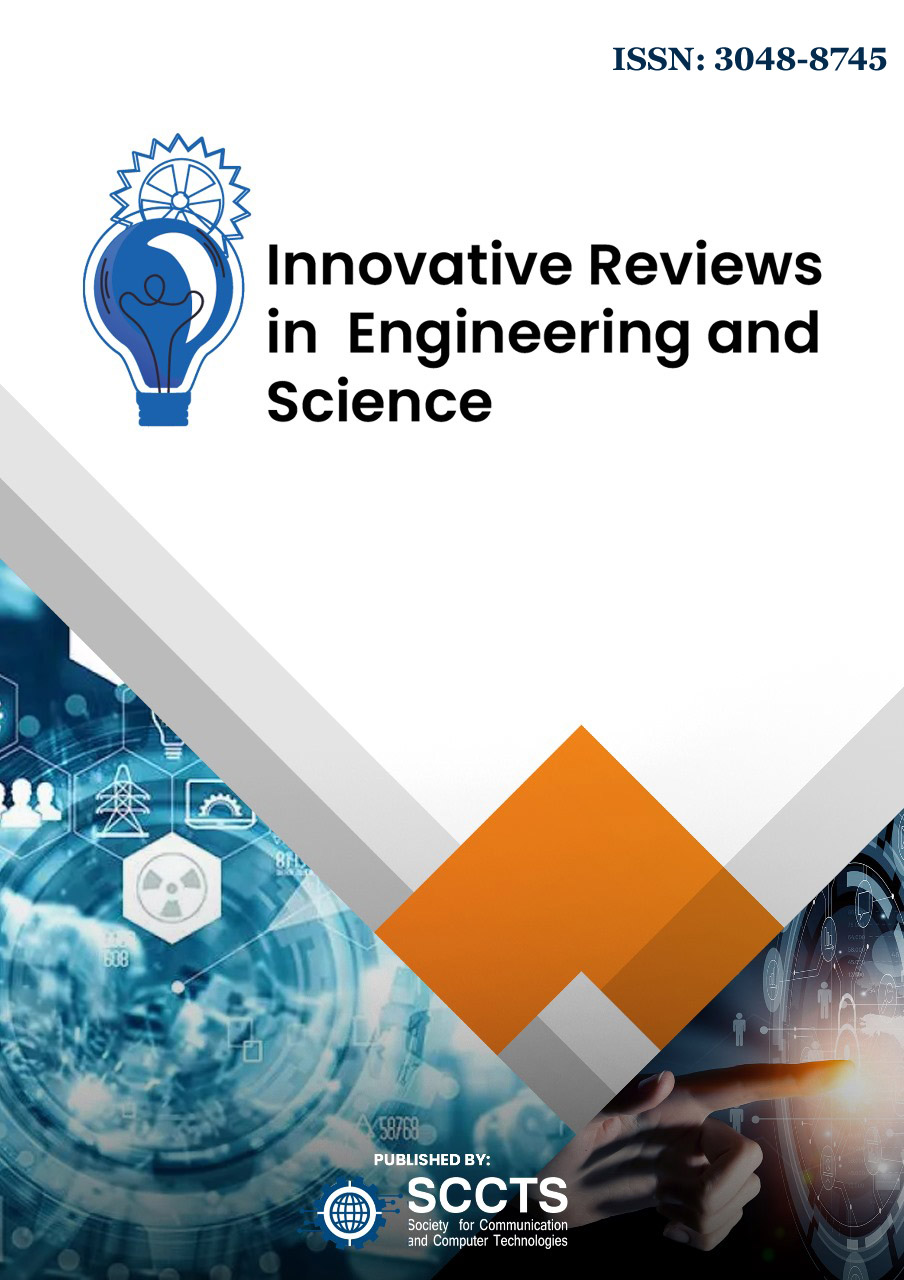2D Materials for Next-Generation Electronics and Optoelectronics: Trends and Challenges
DOI:
https://doi.org/10.31838/INES/03.01.12Keywords:
2D materials; Transition Metal Dichalcogenides (TMDs); Graphene; Black Phosphorus; Hexagonal Boron Nitride (h-BN); MXenes; Field-Effect Transistors (FETs); Optoelectronics; Photodetectors; Flexible electronics; Van der Waals heterostructures; Chemical Vapor Deposition (CVD); Bandgap engineering; Quantum devices; Synthesis techniques; Material integration; Electronic mobility; Nanomaterials.Abstract
Flat, two-dimensional (2D) materials have also become a breakthrough type of nanomaterials, which exhibit outstanding electrical, optical, thermal, and mechanical performances because of the properties inherent in their ultrathin structuring (of atomic dimensions) and their well-engineered properties. Since graphene was isolated, there has been a broad number of 2D materials eagerly pursued as possible next-generation materials in electronics and optoelectronics, including, but not limited to the transition metal dichalcogenides (TMDs), black phosphorous (BP), hexagonal boron nitride (h-BN), and the MXenes. This review concisely summarizes the current development in Design, synthesis, characterization and use of 2D materials refractory to work into their incorporation as FETs, photodetectors, conformable electronic circuits, quantum devices and energy-harvesting platforms. Each of the synthesis methods that have been proposed, such as mechanical exfoliation, chemical vapor deposition (CVD), molecular beam epitaxy (MBE), and liquid-phase exfoliation, are critically assessed and a trade-off in material quality, scalability, or feasibility of integration is highlighted. There is particular focus on new developments in van der Waals Heterostructures, bandgap engineering tactics and strain-driven modulation, which allow previously unattainable manipulation of electronic and optoelectronic characteristics. Although 2D materials have shown excellent potential in lab-scale devices, other drawbacks in terms of the ambient instability (particularly in BP), interface traps, unfavorable contact resistance, and limited ability to grow large AREA uniformly, have prevented a successful application in practice. The limitations are discussed at length in this review, as well as the newer developments to address them: passivation layers, low-temperature processing and AI-aided material discovery. Added to this, we provide the tendencies in device performance characteristics, including its carrier mobility, responsivity, switching speed, and power efficiency, and compare 2D materials with conventional semiconductors. This article will give a sense of integrated research efforts among researchers and engineers who take a multidisciplinary approach toward the development of materials science, nanoelectronics, and photonics with the view of creating a coherent outline of the road toward practical, high-performance and scalable systems that rely on 2D materials.Published
2025-10-16
Issue
Section
Articles
How to Cite
2D Materials for Next-Generation Electronics and Optoelectronics: Trends and Challenges (Chandrakumar Rasanjani & Robert G. Luedke , Trans.). (2025). Innovative Reviews in Engineering and Science, 3(1), 90-98. https://doi.org/10.31838/INES/03.01.12





